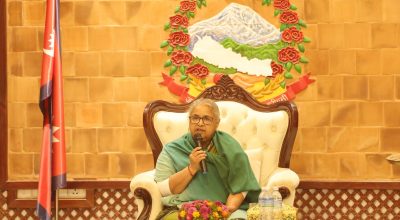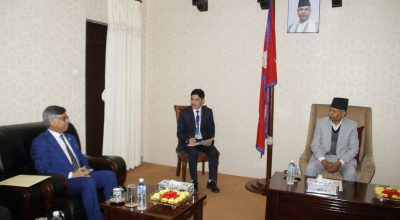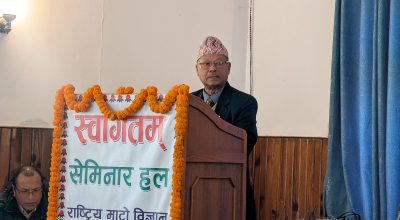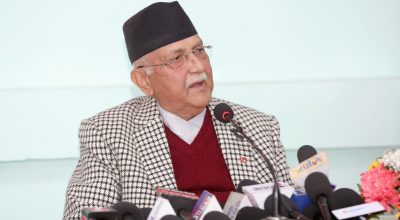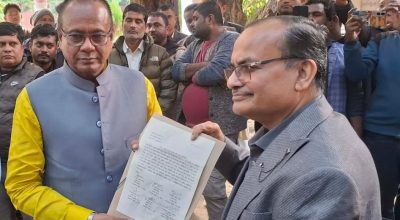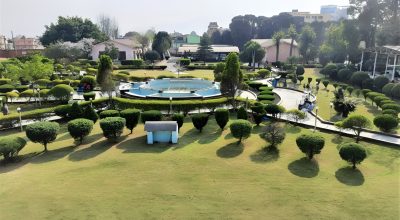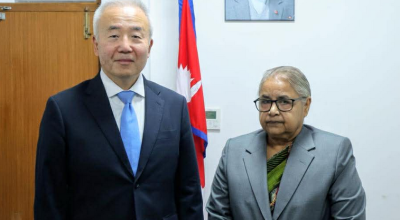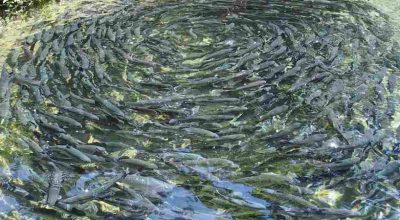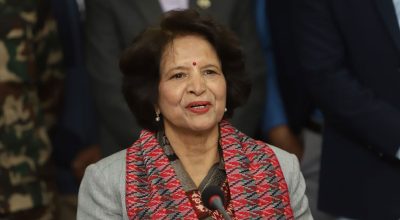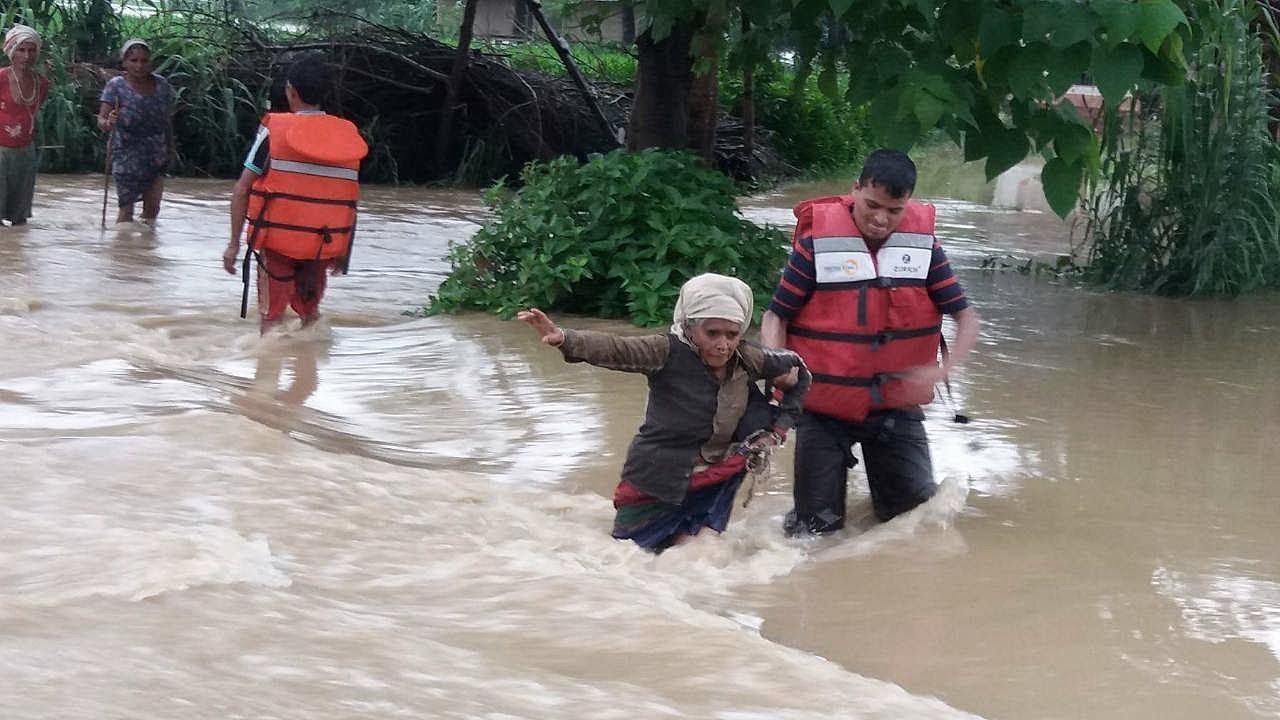
Chandrakala Bhandari/RSS
BHADRAPUR: Flood in Jhapa district has been a perennial problem. Last monsoon, 4,020 people of 689 households in the district were affected by flooding in the Kankai, Ratuwa, Mawa and Biring rivers.
Three hundred fifty bighas of arable lands have been eroded and 710 bighas submerged. Impacts of the rivers may double and more people get affected this monsoon season, according to a flood forecasting study conducted by the people’s embankment programme.
Over 10,695 population of 1,965 households are vulnerable to flooding during this monsoon if the rivers have not been controlled, said the programme chief Rup Narayan Adhikari. Over 5,105 bighas of arable lands would be eroded, he said.
Despite efforts in controlling the rivers in the past, there lacks adequate budget in this regard, it has been said. It requires additional Rs 400 million to control the rivers, said Adhikari. In the current fiscal year, 2020/21, the federal government allocated Rs 200 million for the project and 90 percent construction work has been completed so far, he said.
Bamboo plants and grass saplings have been planted on the river banks. It requires an integrated project introduced jointly by the federal, provincial and local governments to control the rivers effectively, it has been suggested.
Rivers that have their origin in the Chure and Mahabharat run through Jhapa districts. Kankai, a big river running through the district, has caused much impacts. Extraction of river products rampantly is to blame for affecting river flows, thus causing natural disasters. Local levels have been accused of awarding contracts worth thousands of rupees with agreement of the provincial government to remove river products from local rivers like Kankai, Biring, Ninda, Mechi, Timai, Ratuwa and Mawa.
Extraction of river products rampantly by local levels since some years ago has caused flooding, said Adhikari. “Environmental impacts should be taken into account in removing river products. Extraction of river products rampantly should be stopped.”
He accused the local level of failure to coordinate with the programme in assessing environmental impacts. As a result of extraction of river products rampantly, some rivers have changed their course, causing flooding, he said.
Kankai river last monsoon eroded 222 bighas of arable lands and flooded 245 bighas at Shivasatakshi Municipality, Kankai Municipality and Jhapa Rural Municipality. Over 1,290 population of 169 households were affected by the flooded river. The river may erode 3,500 bighas of lands this monsoon, it is said.
Dozens of settlements at Jhapa Rural Municipality have been affected by flooding last monsoon. The flood displaced people have been taking a shelter at schools and safer areas nearby.
Eighty two families at Milanbasti in the rural municipality-1 have been affected by flooding in the Kankai river last year. “Flooding has swept away houses. We have been left with nothing to live in and eat. Demands of we poor people have gone unheard so far,” said a flood victim, Fulmuni Hasda.
The victims have demanded their relocation to safety and that the river be controlled at the earliest.
The problem has exasperated every year and local resources would not be enough to control the rivers, said the rural municipality chair Jaya Narayan Sah. “We have identified the settlements affected by flooding. A plan has been devised to effectively control the rivers in coordination with the people’s embankment programme.”





